Updated on February 13, 2025
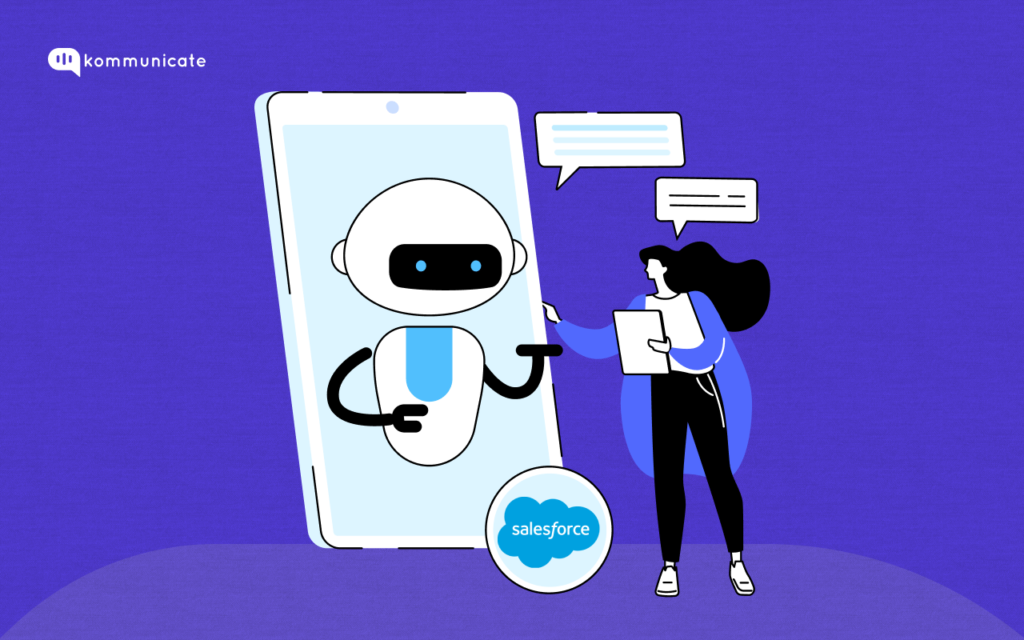
Customers today are more demanding than ever, and, in a hyper connected world, providing exceptional customer service is a must-have. Enterprises can either accept this reality, or perish. The Gen-Z, digital-native generation further exacerbates the demand for efficient customer service, with a Gartner report that says 65% of them prefer a self-service option over traditional human interactions.
In this article:
- Understanding Salesforce chabots for Enterprises
- Types of Salesforce chatbots
- Why Enterprises need Chatbots on Salesforce
- Steps to build chatbot for Salesforce
This growing demand has led to a surge in the adoption of AI-powered customer service solutions, with the global conversational AI market projected to reach a whopping $41.39 billion by 2030, according to this Grand View Research report.

Enterprises today are struggling to keep up with the deluge of customer service requests that come in, chiefly because of the faster turnaround times that customers have come to expect in this age of technology. Self-service portals, chatbots, virtual assistants, interactive FAQs, knowledge bases, all these and much more make delivering exceptional customer service that much easier.
But it is the sheer volume of support requests that is straining the customer service departments of enterprises. Hilton hotels, for instance, uses Generative AI to power its virtual assistant “Hilton Honors.” The AI tackles a high volume of guest inquiries through various channels like the mobile app or the hotel website. The AI can personalize responses based on a guest’s booking details, offering a much more relevant customer experience.
So is Conversational AI the future of customer service, especially in an enterprise setting? We believe it is, and, in this blog post, we are going to show you how more and more enterprise CRMs are relying on chatbots to automate their customer support needs. We are going to be specific about Salesforce chatbots, because, let’s face it, it is one of the most popular CRM solutions on the planet.
If you wanna know more about chatbots, check out these articles:
- How Bots in Microsoft Teams Help Support your workforce in 2025
- Convert your Salesforce FAQ into a Chatbot
- How Enterprises Can Convert PDFs/Documents into Chatbots with ChatGPT
There are over 178,000 websites that use the Salesforce CRM, according to this data by Builtwith. Salesforce chatbots are powerful tools that enterprises can use to streamline their customer service and enhance the overall customer experience. These chatbots use AI and NLP techniques to provide personalized assistance and automate routine tasks.
Understanding Salesforce chabots for Enterprises
What is a Salesforce chatbot?
A Salesforce chatbot is a conversational interface that integrates with the Salesforce platform to enhance customer interactions. Salesforce chatbots are built either using Salesforce’s Einstein AI technology or using a third-party tool such as Kommunicate.
Developers can design the chatbot to carry out a wide array of tasks, such as answering customer queries, providing product recommendations, updating records on the Salesforce CRM etc. These chatbots are super smart. They continuously learn from their previous interactions, and their responses get better over time.
Some of the functionalities of Salesforce chatbots include:
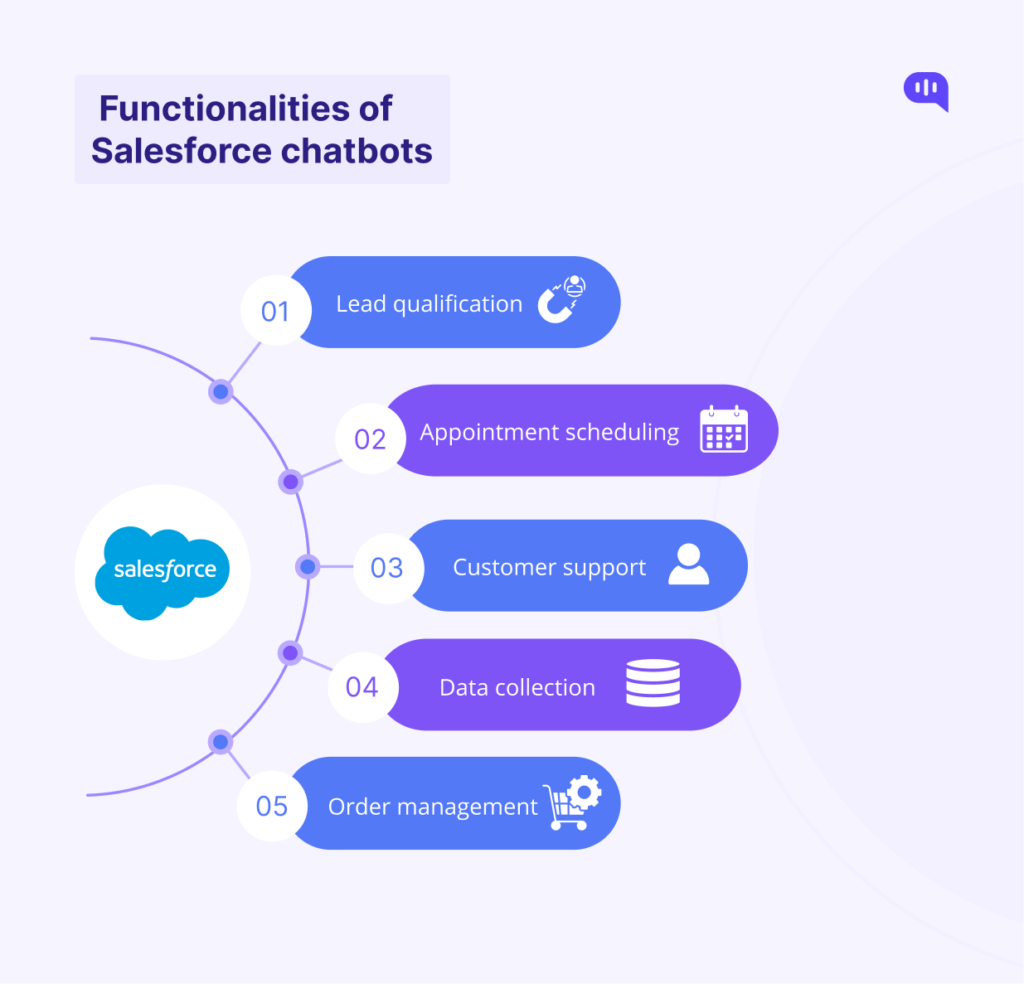
- Lead qualification: You set a predefined criteria to qualify customers, and the chatbots will do the rest!! They engage with all the visitors to the website, ask them qualifying questions, gather relevant information and bam!! Your lead is ready for your sales representative.
- Appointment Scheduling: Straight from the conversational interface of the chatbot, customers can check availability, book time slots, and schedule appointments or meetings in real-time. This streamlines the appointment booking process for both customers and employees.
- Customer Support: Chatbots answer questions about products or services, provide troubleshooting guidance, and escalate the more complex enquiries to human agents as and when needed.
- Data Collection: Chatbots can capture lead details, update content records, and ask for feedback through interactive conversations. All this will help improve the data accuracy.
- Order Management: Salesforce chatbots can assist customers with placing orders, tracking shipments, or managing returns.
Boost support efficiency and resolve queries faster with
AI-powered email ticketing from Kommunicate!So, how many types of Salesforce chatbots are out there? Just one, right? Turns out, there are actually two.
Types of Salesforce chatbots
Salesforce had announced last year that it was debuting Einstein GPT in partnership with OpenAI, and the chatbot will integrate with Salesforce’s existing CRM system. Einstein GPT will let clients generate client summaries, create personalized emails and marketing copy. Einstein GPT is powered by OpenAI’s enterprise version, and clients can also train Einstein GPT using their own training data.
Here’s a brief glimpse of what Einstein GPT can do:
- Help developers by auto generating code.
- Schedule meetings and automate other tasks.
- Glean insights from customer data using AI.
- Create personalized emails that will help the sales team.
- Write targeted marketing copy to increase response rates from marketing activities.
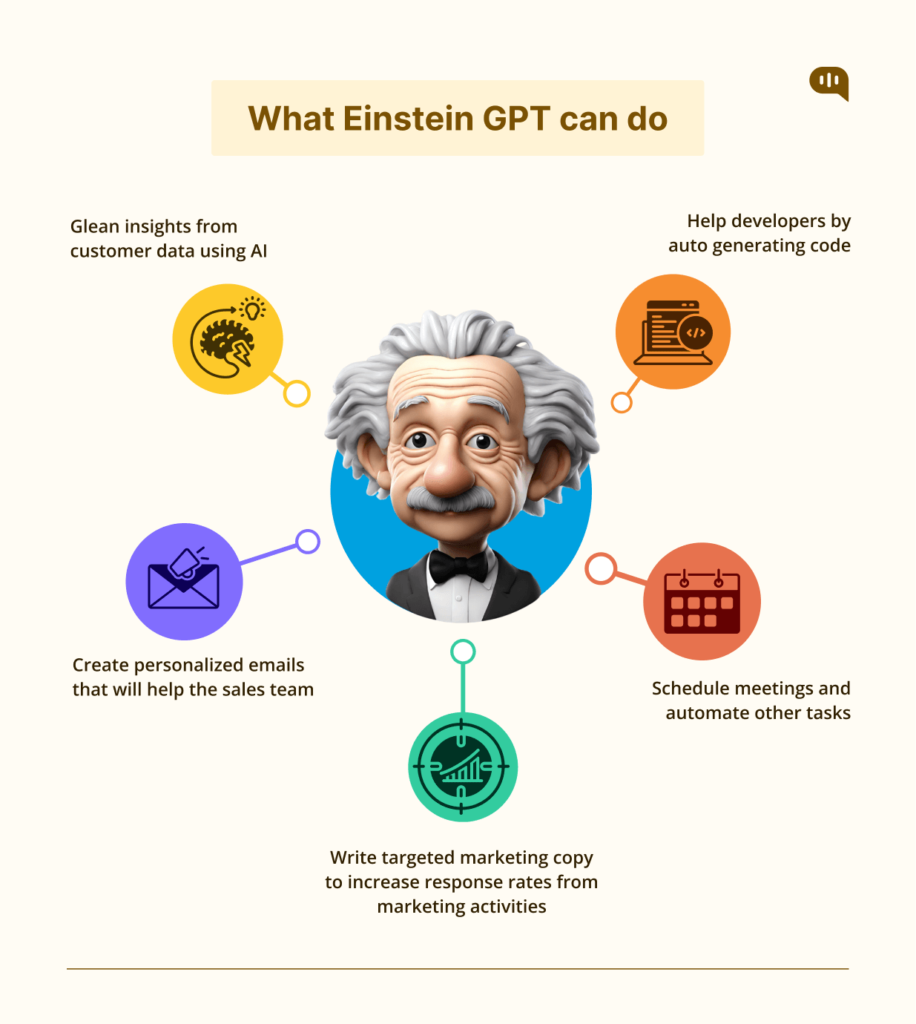
But Einstein GPT is not the only Salesforce chatbot. There are also custom chatbots, built by third party developers which can be built independently and then integrated with Salesforce. The main difference between the Einstein GPT bot and custom chatbots is that custom built chatbots offer a lot more customization opportunities.
Custom chatbots can be integrated with not just the CRM tools, but also with other third party softwares such as inventory management tools or messaging apps. Companies can hire a chatbot development team, such as Kommunicate, and make sure that the chatbot is perfectly aligned with the company’s goals and needs.
Here are the five key differences between the Einstein GPT chatbots and custom-built chatbots:
| Functionality | Einstein Chatbot | Custom built chatbot |
| Ease of installation | Is readily available in Salesforce. No developers needed. | Requires developers or a bit of technical knowledge to set up and run. |
| Integration capabilities | Easy to integrate with Salesforce tools. | Integrates with any tools, depending on the provider. |
| Licensing | Requires Salesforce License to use it. | Flexibility in terms with which platform the customer wants to use. |
| Dashboards | Limited dashboards | A wide array of customizable dashboards. |
| Pricing | Fixed pricing | Pricing varies depending on the provider. |
So why do Enterprises need chatbots in Salesforce? Let’s dig deeper in this section:
Why Enterprises need Chatbots on Salesforce
The short answer to this question is three pronged- Chatbots help get more done, give a structured approach to customer service, and most importantly, free up human agents so that they can focus more on the complex tasks.
A machine is a resource; a human is not a resource. A human is a human and, as part of their life, a human being is going to work so it’s about asking how you make that experience enjoyable.
Laurent Sylvestre, General Manager of People and Culture, Beca
Let’s take the example of a financial services company that uses a chatbot in Salesforce to carry out a bevy of tasks. These tasks may include – helping customers with their account enquiries, give advice on which products to buy, process transactions in real-time etc.
An e-commerce website, on the other hand, may use a chatbot to offer product recommendations, handle support queries, track orders among other aspects of the whole shopping experience. Enhancing the way the customer perceives the brand, chatbots thus help these enterprises to deliver a tailored experience.
A leading healthcare provider, for example, implemented a chatbot into their Salesforce CRM in the Healthcare Cloud Instance. MedAssist today helps patients in refilling Upon prescriptions, booking an appointment with a doctor, or accessing their medical records. Upon login, MedAssist will help patients with queries such as “Schedule an appointment with Dr. Xavier,” or “Refill my asthma medication.”
All these are use cases of Salesforce chatbots being put to use in an Enterprise setting, and drive home the point that enterprises can reap rich benefits using chatbots. Let us now see how you can go around building one of these chatbots.
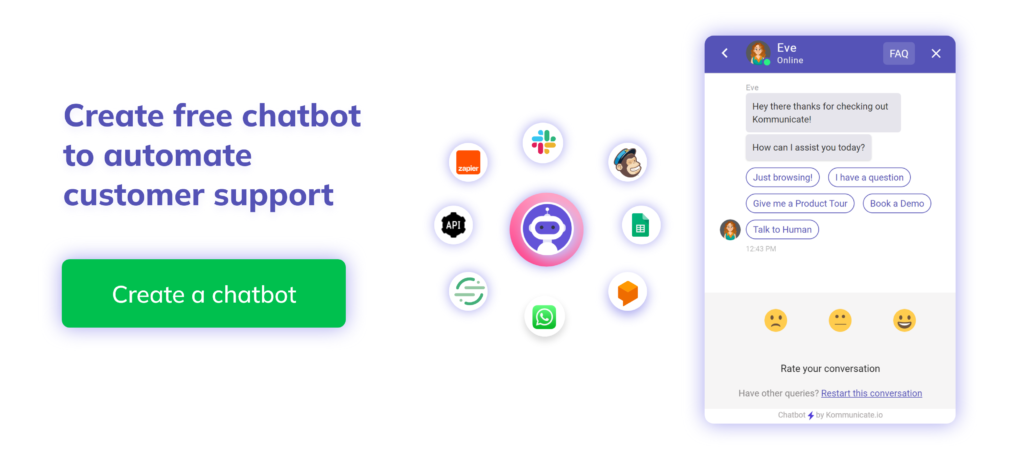
Steps to build chatbot for Salesforce
Building an Einstein chatbot for your Salesforce CRM is quite simple, and there is detailed documentation available on the Salesforce website that will help you in understanding this process.
We are now going to help you understand the steps behind building a custom chatbot.
Step 1: Choose your bot development framework:
This can be any third party chatbot development tool, with a host of them available in the market. Amazon Lex, Google Dialogflow or Microsoft Bot framework are just some of the other names. You can also use open-source solutions like Rasa or Botkit.
Step 2: Build the chatbot
This is the step where you actually go and build the chatbot, create intents, entities and also train the NLP model. If you choose a platform such as Kommunicate, you can be done with this step in less than 10 minutes.
Step 3: Build the integration layer
This will be a middleware layer or integration component which will act as the bridge between your custom chatbot and Salesforce CRM, handling the communication between the two systems.
Step 4: Authentication
Using API keys or OAuth, set up the authentication mechanism to securely connect your integration layer with Salesforce.
Step 5: Use Salesforce APIs
In this step, use the Salesforce APIs such as the REST API or the Apex API to interact with the Salesforce data and perform operations like creating, retrieving or updating records from various Salesforce objects (Leads, Opportunities, etc.)
Step 5: Test and deploy
After conducting a thorough test of the integration and various Salesforce functionalities, deploy the chatbot to the production environment that is accessible to your users.
Step 6: Monitor and maintain
Continuously gather the user’s feedback and monitor the chatbot’s performance. Update the NLP model and conversational flow as and when required to improve the overall experience.
Here’s a quick video on connecting chatbots with Salesforce Knowledge Base articles.
And that’s a wrap folks. We have taught you how to build a Salesfroce chatbot, and also the advantages and functionalities that the chatbot offers. Use this guide and watch the productivity of your enterprise soar.
Naveen is an accomplished senior content writer with a flair for crafting compelling and engaging content. With over 8 years of experience in the field, he has honed his skills in creating high-quality content across various industries and platforms.


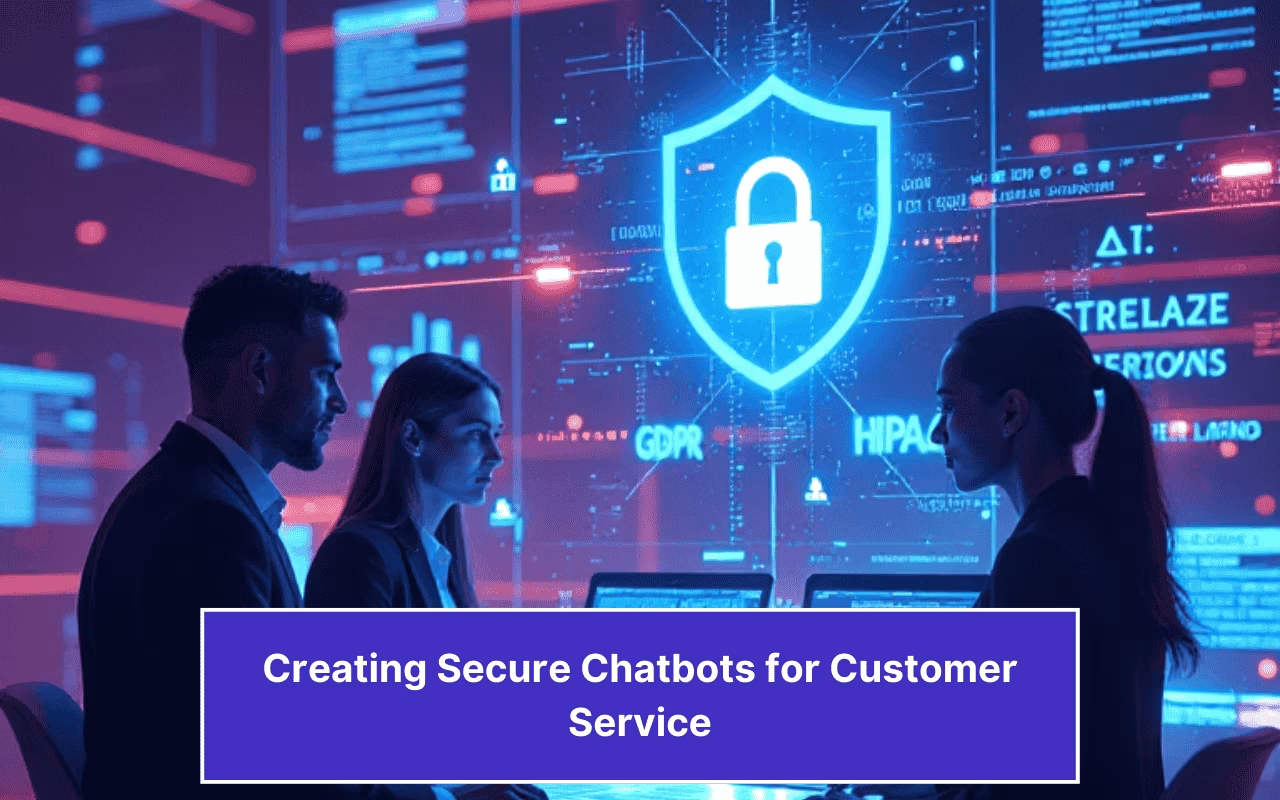
![What is Conversational Intelligence [Benefits + Features] cover image of conversational intelligence.](https://www.kommunicate.io/blog/wp-content/uploads/2025/04/Featured-Images-1-1-1.avif)

